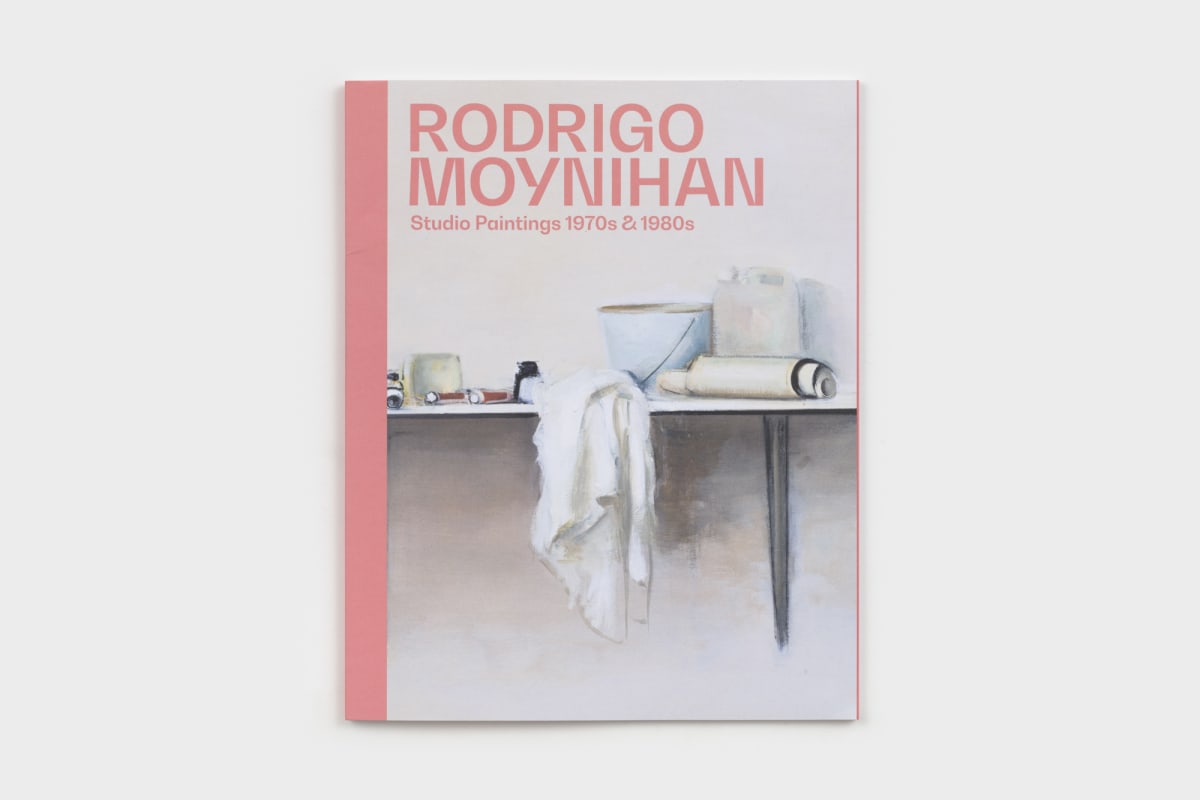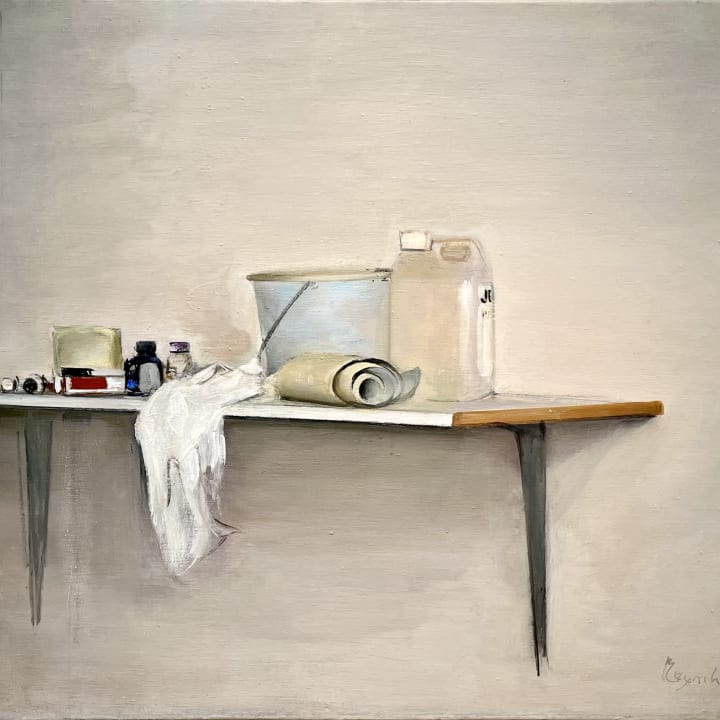RODRIGO MOYNIHAN: The Studio Paintings, 1970s & 1980s
-
Overview
"I wanted to paint them because they looked like that—without my intervention—having arranged themselves like that in that particular light."
David Nolan Gallery is pleased to announce the gallery’s first solo exhibition of work by Rodrigo Moynihan, Studio Paintings, 1970s & 1980s, which will be on view from January 20 through March 5, 2022. A catalogue with text by John Yau accompanies the exhibition. The show marks the artist's only solo presentation in nearly 15 years, both in the United States and abroad, and consists of still life paintings and self-portraits.
Rodrigo Moynihan was born in Tenerife, Spain in 1910 to a Spanish mother and an English father. Moynihan would spend much of his adult life in London, where he established himself as the premiere portrait painter in the United Kingdom, which led to his appointment as the head of painting at the Royal College of Art. Under Moynihan’s auspices, the Royal College became the hub of the British art world, as Francis Bacon occupied Moynihan’s studio, and Leon Kossoff, Frank Auerbach, Peter Blake, and David Hockney were students. Showing in London, Paris, and New York, his paintings would oscillate between abstraction and figuration, but always prioritized the medium itself, emphasizing painterly strokes and deft gesture.
In the early 1970s, Moynihan began making a series of still lifes comprised of tools of a painter’s trade haphazardly strewn on tables and shelves. Of these works the artist said: “It was especially important to me not to arrange the still life so as to form a pictorial grouping—a picture. I wanted the objects to be found…so that the dictionary words of describing an object disappear. I wanted to paint them because they looked like that—without my intervention—having arranged themselves like that in that particular light.”
Adopting the form of a tondo, Roman Head, Bottles & Paint Tubes presents these such items, not as props, painstakingly placed in a strategic arrangement, but instead in their natural resting state as Moynihan would encounter them each day. While the use of circle shaped canvas dates back to the Renaissance, the effect on Moynihan’s compositions is like that of a telescope, honing in on specific areas of a larger scene. The artist’s mastery of natural light is evident in the subtle hues of grey that characterize the background and the glinting liquid-filled bottles that sit atop a shelf. The condition of Moynihan’s subjects, nearly empty, crumpled, half-used, weathered, signify there is life before and after the moment captured in the paintings.
Alongside these works, Moynihan painted numerous self-portraits, recording himself reflected in a mirror. The gold edge of the mirror acts as both a framing device and a compositional element; it changes angle and migrates throughout each canvas. These self-portraits show a contemplative painter in his later years, inextricably bound to his medium and life’s work. They also connect him with Diego Velázquez, whose court paintings were filled with humanity and physicality, and who notably recorded his own presence in his masterpiece, Las Meninas.
Looking at Summer Interior, we see the painter at work, easel in hand before his canvas, starting outward into the mirror. Shirtless and nonchalant in the hot seasonal air, bathed in tonal yellow sunlight, his gaze appears unflinching as he depicts his own semblance. As the viewer’s eyes meet his, we briefly consider that we are the sitters, until the mirror grounds the composition and implies we are merely spectators happening upon a candid, private instance in the studio. There is a quiet confidence in Moynihan’s brushstroke, particularly in these mature paintings, that renders the canvases instinctual, where his personhood and profession are one and the same, defined by each other.
But perhaps what draws the contemporary viewer to Moynihan’s work is not its connection to disciplines of time past, rather how it reassesses the terms and principles of the medium, such as composition, subject and light. Moynihan’s canvases lack pretention, favoring swift gesture over tireless reworking, suggesting that these objects and even himself, are only temporarily frozen, forever shifting, moving and eventually, ceasing to be. As the objects and Moynihan move in and out of frame, we’re forced to consider where they go. People age, paint tubes go empty, newspapers are discarded, nothing is untouched by the hands of time.
-
Installation Views
-
-
Publications
-
Artist




